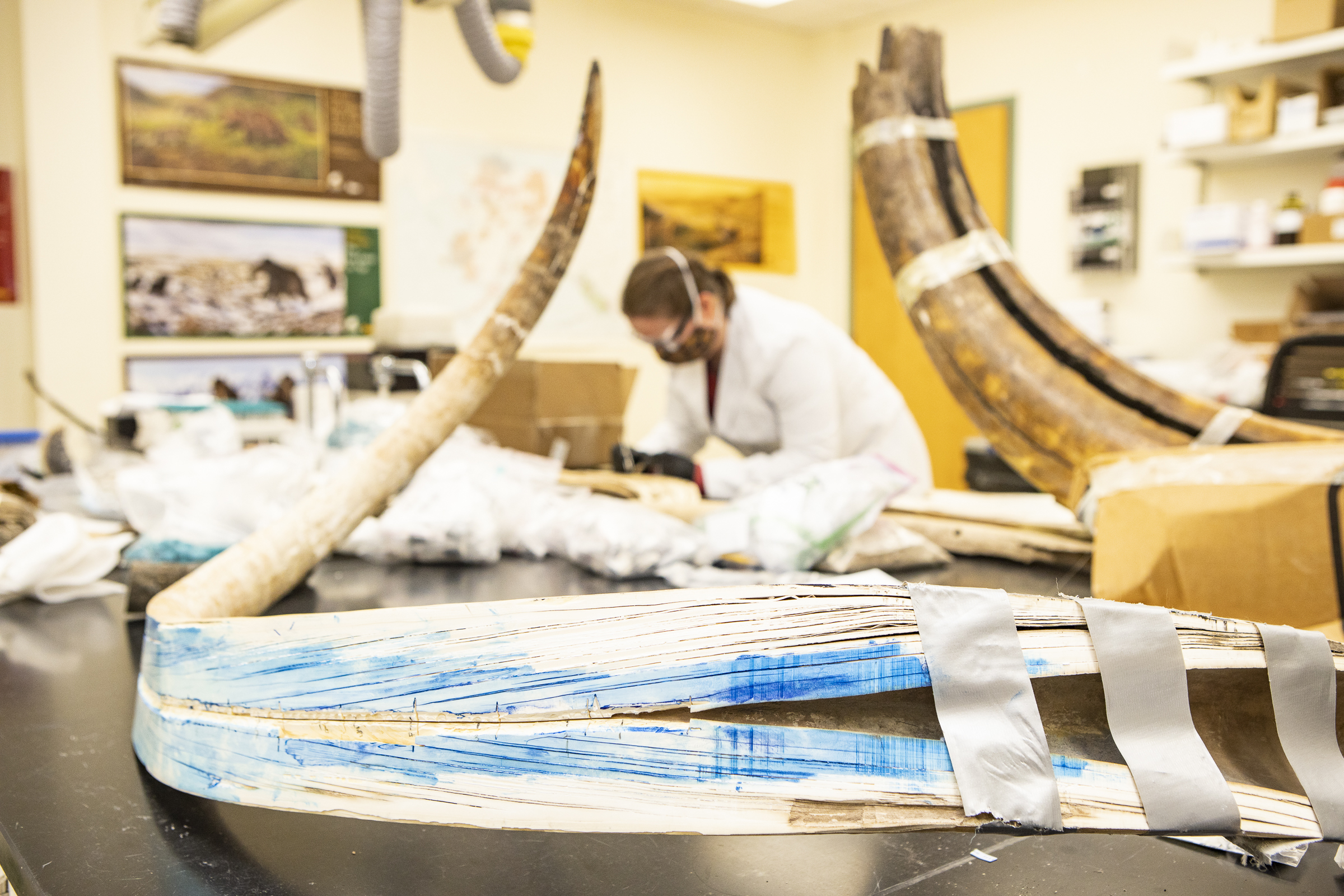With today's technologies, a 17,000-year-old tusk can be completely intrusive.
Analyzing the remains of a woolly mammoth found in Alaska, a team of researchers has been able to reconstruct many aspects of the life of this prehistoric animal: from the diet it followed to the journey it made through the territory in which it lived for 28 years .
Their results, published this week in the journal
Science,
are based on the analysis of isotopes obtained from that
almost two-meter long tusk
and other isotope maps of that country prepared by analyzing the teeth of hundreds of small rodents that are found in the collections of the North Museum of the University of Alaska to which the researchers belong.
This is the first proof that these animals traveled long distances.
"It is not clear if he was a seasonal migrant, but he covered a vast terrain. He visited many parts of Alaska at some point in his life, which is quite surprising considering how extensive that area is." Matthew Wooller, a researcher at the University of Alaska Fairbanks and study leader.
The researchers cut the tusk and, using a laser and other instruments, obtained 400,000 microscopic data points.
A diary written on the fangs
Thanks to the way in which the fangs grow, the scientists were able to obtain information from different stages of their life.
Mammoths are constantly adding new layers to their tusks.
When it was split lengthwise, they could see the growth bands, which are a kind of chronological record of the animal's life.
"From the moment they are born to the day they die, they have a journal and it is written on their fangs," compares Pat Druckenmiller, paleontologist and director of the UA Museum of the North.
"Mother nature does not usually provide such convenient and long-lasting records of an individual's life," he
argues.
Illustration of a mammoth in the Arctic 17,100 years ago made from a painting by paleoartist James Havens
The scientists reconstructed the journey that the mammoth followed to the point of the Arctic Circle where it died and was therefore found, by analyzing isotopic signatures of the elements strontium and oxygen, which were combined with maps that predicted isotope variations in Alaska.
Taking into account geographic barriers and estimating the average distance it traveled each week, the researchers used a novel spatial modeling approach to map the likely routes the animal took during its lifetime.
A male expelled from his group
The ancient DNA preserved in the remains of the mammoth allowed the team to identify it as a male that was related to the last group of its species that lived in mainland Alaska.
For example, an abrupt change in his isotopic signature when he was about 15 years old probably coincided with the expulsion of the mammoth from its herd, reflecting a pattern seen in some male elephants today.
"Knowing it was a male provided a better biological context in which we could interpret the isotopic data," says Beth Shapiro, a professor at the University of California at Santa Cruz and a Howard Hughes Medical Institute investigator.
The isotopes also gave them a clue as to what triggered the mammoth's death.
Nitrogen isotopes increased during the last winter of its life, a sign that may be a sign that indicates starvation in mammals.
The mammoth tusk was longitudinally dissected to obtain the isotopes JR Ancheta, University of Alaska Fairbanks
For Wooler, discovering details about the life of extinct species goes beyond satisfying the curiosity to know, since they can be very relevant today, when many species are trying to adapt to variations in climate.
"Currently, the Arctic is undergoing many changes and we can use the past to see what the future will be like for today's species,"
says the scientist.
"Trying to solve this detective story is an example of how our planet and our ecosystems react to environmental change."
According to the criteria of The Trust Project
Know more
Science and Health
science
Environment Unesco tug of ears to Spain for the overexploited aquifers of Doñana
Climate crisis From a heat wave to floods in a few hours: the atypical British summer due to extreme events
July 2021Rain of stars: When and how to see the Delta Aquarids this July
See links of interest
Last News
Work calendar
Home THE WORLD TODAY
Master Investigation Journalism
Horoscope August 11

